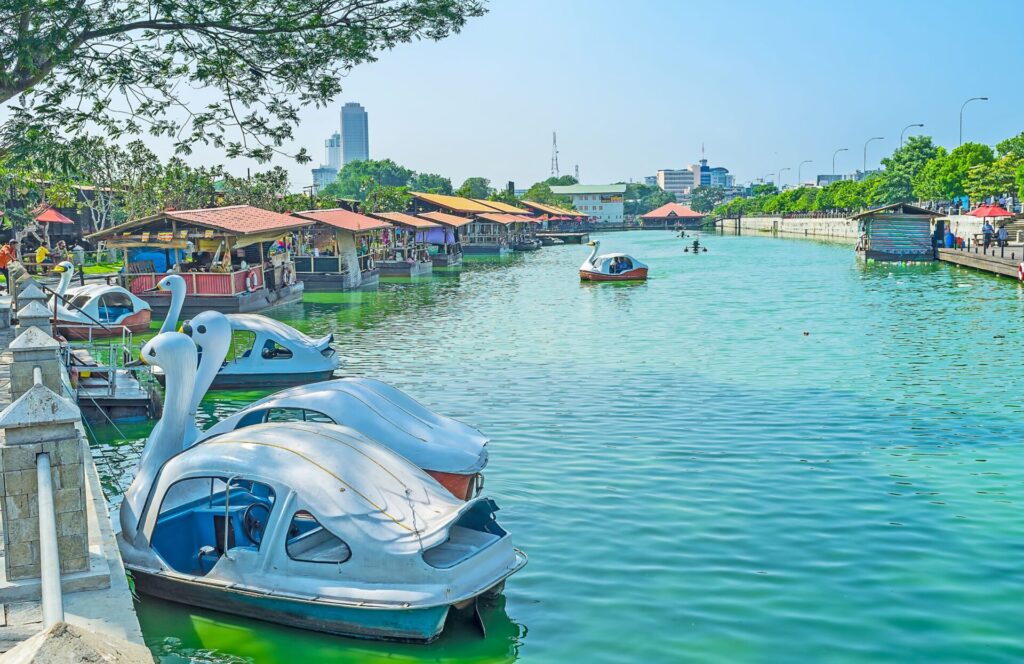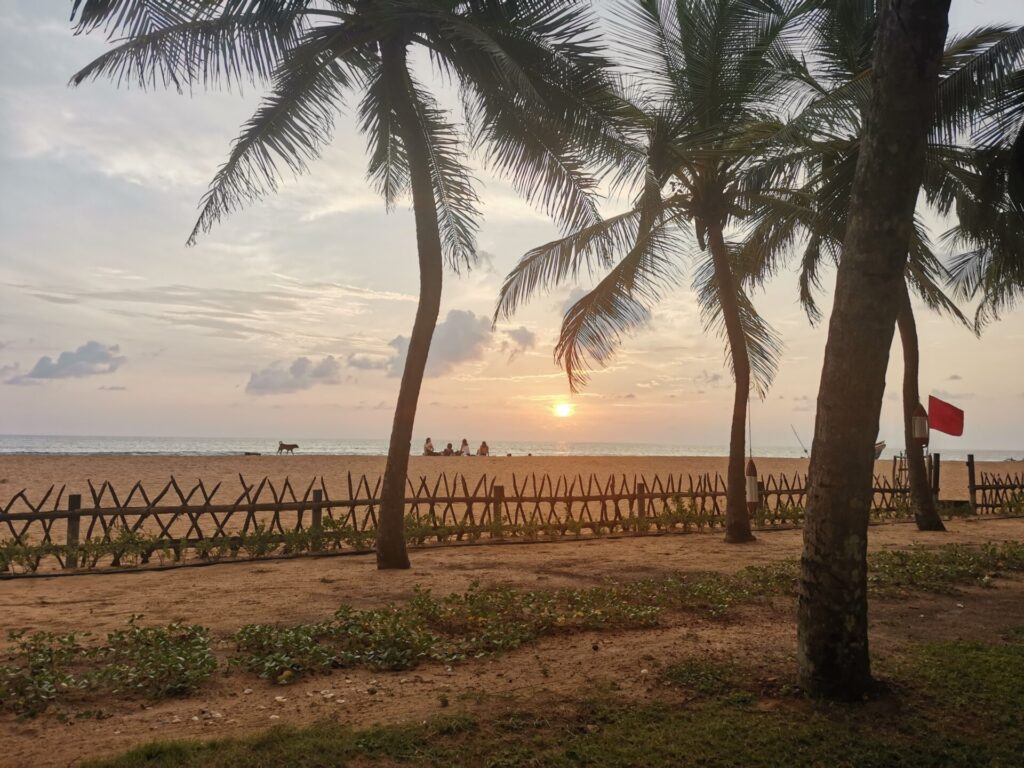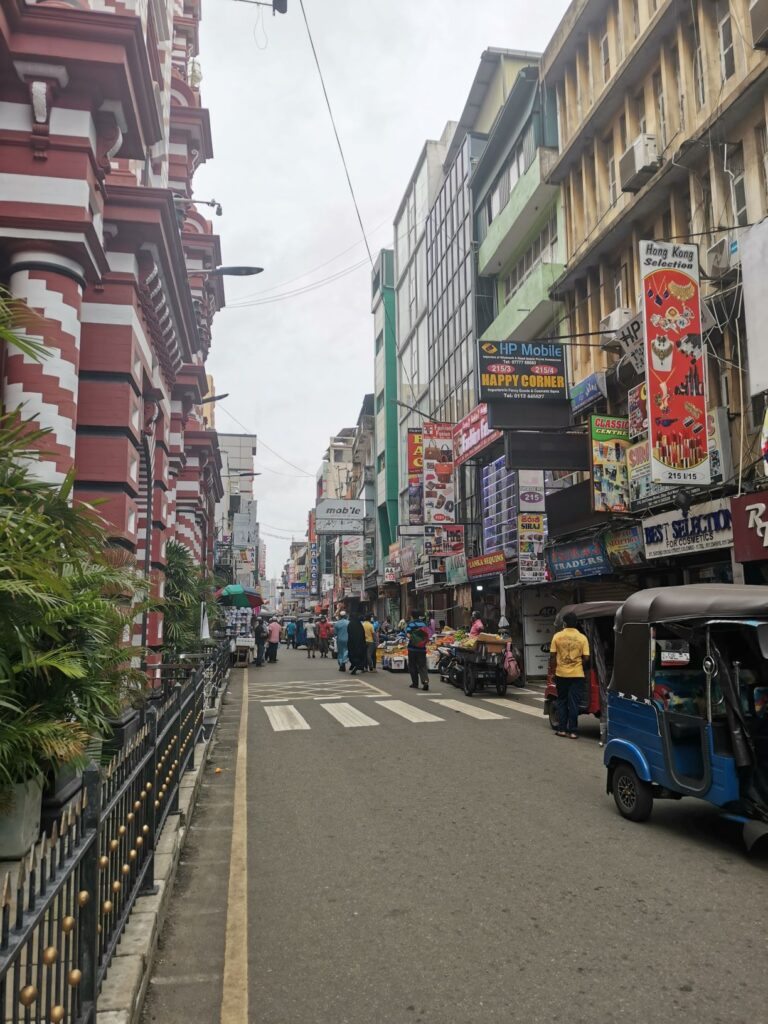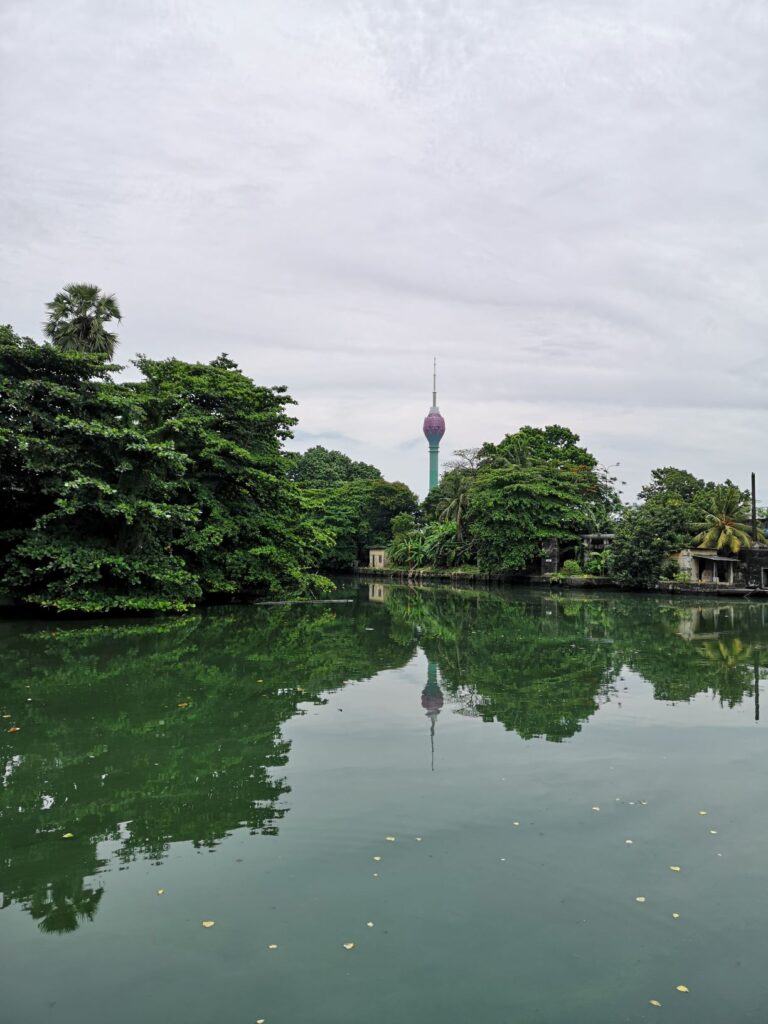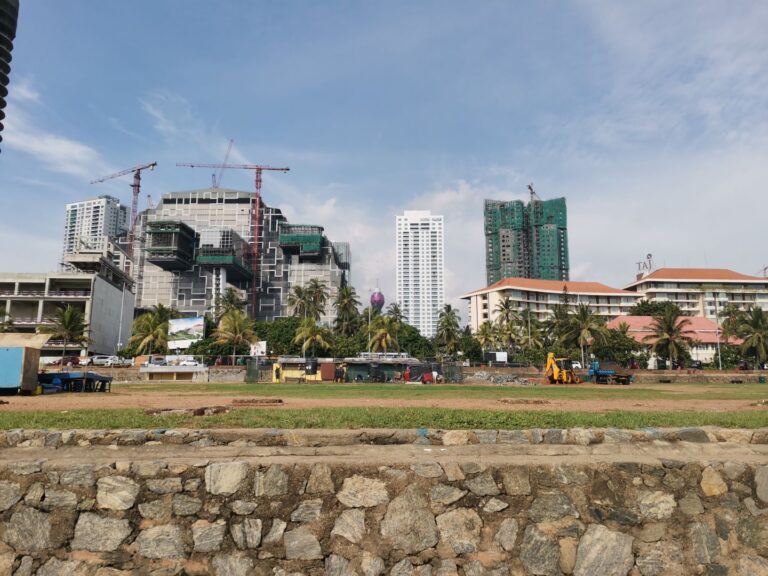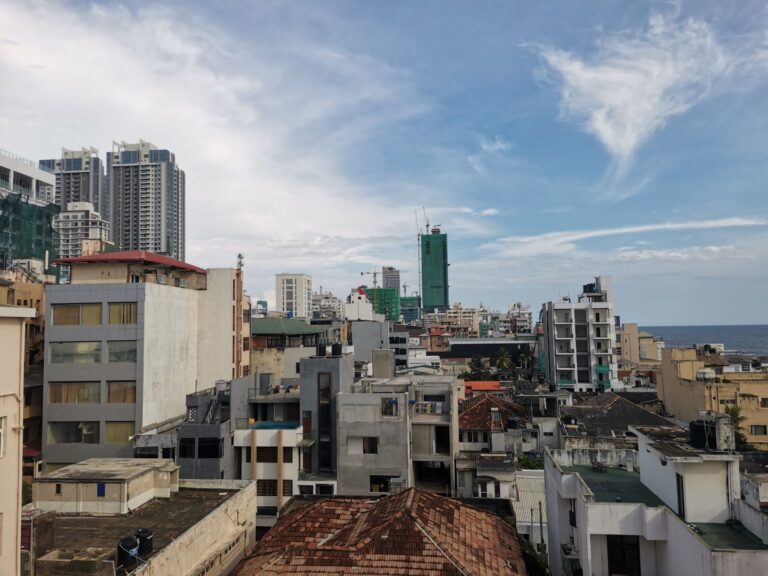COLOMBO
Welcome to our Colombo travel guide, where we explore the capital city of Sri Lanka. This busy, and somewhat hectic, city is constantly developing and is now finding it’s place as a worthy stop on travellers routes in Sri Lanka.
As a city not often high on peoples list to visit when coming to Sri Lanka, Colombo is finding it’s feet with a growing number of developments happening, and more boutique eateries and hotels popping up. A stop here can be a little hectic for tourists, but with a number of landmarks and historical attractions, taking a few days to explore the city is worth it.
Colombo Travel Guide Contents
Colombo Travel Guide
Getting to and from the airport
Bandaranaike International Airport, often reffered to as Kutanayake or Colombo International Airport (CMB) is the largest and main airport in Sri Lanka, located 35km from Colombo city centre. The airport has 2 terminals, with the newer, terminal 1, serving domestic flights and the older, terminal 2, serving international flights. Terminal 2 is a little dated but does have a selection of shops and restaurants to cater to passengers. Here are the most popular ways of getting to and from the airport:
- Colombo Express Bus, costing Rs110 ($0.55) for a one way ticket, this bus runs from 5.30am-8.30pm and connects the airport to city centre, and leaves every 30min. The bus stop is located approx 50m from the airport arrivals. Stops for the bus are Central Bus Station, Pettah Fort and Colombo Fort Station, taking approx 1 hour (in normal traffic), so onward travel from here is likely needed
- No.187 Bus, a second bus option stopping at the Colombo Fort area. A one way ticket costs Rs110 ($0.55), the bus runs 24 hours a day, departs every 45 min and takes approx 1.5-2 hours. Take the inter-terminal shuttle to get to the Bus Station to board the bus
- Private Airport Transfer, a convenient option for most travellers to book in advance, available 24 hours, taking approx 30-45min into the city. No wait times as they will usually meet you in arrivals and costs approx Rs5000-6000 ($25-$30)
- Taxi from taxi rank, not a highly recommended option due to drivers often overcharging, you should agree a price with the driver beforehand. As a guide, a trip into the city from the airport should cost around Rs2500-3000 ($13-$15)
- Uber/PickMe, PickMe is the largest and most popular ride hailing app in Sri Lanka and offers tourists with a more convenient option, rather than having to haggle the price for every trip. A trip into the city from the airport should cost around Rs2000 ($10)
Areas to stay
As a sprawling city, decided on where to stay in Colombo can be a little daunting. As most travellers only stay for a few days, and coupled with the heat, and busy streets, making sure that your accommodation is in the right area, is key to enjoying your time in the city. The areas of Colombo are numbered from 1 to 15 (and knowing this is very helpful for getting around the city!). Here's a guide to the most common tourist areas:
- No.1 Fort, located near the train station, this restored historical fort centre of the city is full of boutique restaurants, shops and nightlife
- No.3 Kollupitiya, the heart of the city, sprawling off Galle Road and close to attractions, restaurants, night life and shopping centres. This would be our recommendation of the best area to stay as it has everything in one place and is close to the main attractions
- No.4 Bambalapitya, an extended area of Colombo 3
- No.5 Havelock Town, the southern area of Colombo 4, this area is developing into a gentrifyed residential area
- No.6 Wallawatta, a large commercial area along the south of Galle Road and home to Wellawatta beach
- No.7 Cinnammon Gardens, once an area filled with cinnammon trees, this neighbourhood is now a bustling area containing boutique hotels and cafes
- No.11 Pettah Old Quarter, located east of the fort area, this area is largely filled with lots of markets
- No.13 Kotahena, located alongside the port and north of Pettah, this area is known for it's important religious buildings
Getting around
The heat and humidity can make walking in Sri Lanka, and especially Colombo, a little difficult so the chances are, that you will rely on some form of transport for getting around the city on most days. Here's a quick guide to the most useful types of transport available:
- Bus, deciphering which bus you need to get and from where can be a headache so the best way to find the correct bus and stop is to ask a local or your hotel. Buses run frequently and fares range from Rs10 ($0.05) to Rs50 ($0.25), depending on distance
- Train, running along Galle Road and overlooking the sea, this is the most scenic option for getting to the suburbs. Timetables are at stations but services are frequent and the fares are similar to bus fares
- Taxi, unfortunately drivers can often overcharge and will not use the meter so when using a taxi, agree the fare in advance
- Uber/PickMe, the PickMe app is the largest and most popular ride hailing app in Sri Lanka. In Colombo, the wait for a driver is short and prices are shown on the app which avoids issues with overcharging. Despite inputting the drop off location in the app, it is quite common to then have to explain this further when in the transport. Even without using PickMe, using the app as a guide to taxi and tuk-tuk prices can be very useful
- Tuk Tuk, the cheapest way to get around the city, and usually the quickest, hail a moving tuk-tuk and agree a fare before
Accommodation
There are a growing number of accommodation options in Colombo from high end hotels, to budget hostels and apartments. For most western travellers, the prices will be very reasonable and higher end options are much more affordable here than in western countries or some Asian countries. Most hotels, hostels and apartments are listed on the main booking websites. We recommend staying at the Renuka City Hotel which is well located in Colombo 3, along Galle Road, and has a fantastic rooftop pool, and great restaurant serving Sri Lankan cuisine.
Things to see
We don't want to bore you with a list of everything to see and do in Colombo, so here are our top 5 things to see and do:
- Jami Ul-Alfar Mosque, completed in 1909 this is a historic Mosque located in Colombo 11, and one of the oldest mosques in the city
- Gangaramaya Temple, this historic Buddhist temple has a large collection of artifacts and statues
- Galle Face Green, filled with street food stalls, this scenic waterfront area is a great place to try some local eats and watch the sea
- Pettah Floating Market & surrounding area, an area of 92 trade stalls, selling local goods and handicrafts, overspilling onto Beira Lake
- Seema Malakaya/Beira Lake, a Buddhist temple complex on Beira Lake
What to eat
Sri Lankan food is delicious and everywhere in the country, so you will almost definitely come across some of the staple dishes while travelling around. With Indian and Indonesian influences, the cuisine is centered on rice with curry (many varieties available) and an array of side dishes to compliment this. Coconut is a key ingredient and is used in many of the countries dishes. If you want to try some of the local dishes of Colombo, then here are our top picks of the local cuisine:
- String Hoppers, a staple breakfast dish, these parcels of noodles are made with rice flour that is pressed into thin noodles. Often served with sambol and dhal
- Egg Hoppers, these thin crispy crepes are made with fermented rice flour, coconut milk, coconut water and sugar and fried into a bowl, with an egg cracked in
- Coconut Sambol, a side dish of shredded coconut with chilli powder, lime juice, onions and salt. Usually eaten with a curry, roti or rice
- Kottu Roti, a staple street food made with roti mixed with finely shredded vegetables, meat, soy sauce, spices, ginger and garlic. A must try!
- Brinjal Eggplant, this heavily cooked eggplant is mixed with a variety of ingredients to make a rich, caramelised dish
Money
The currency in Sri Lanka is the Sri Lankan Rupee (Rs). Credit & Debit cards are accepted in higher end establishments, larger hotels and shopping malls but many small shops, hotels and restaurants will only accept cash. There are ATM's throughout the city, most of these accept foreign cards but there are one or two that don't, try the next ATM if the first doesn't work. A service charge is generally not added to the bill so you can leave a tip, if you are happy with the service. A tip of 5-10% is the norm and generally expected in Sri Lanka. Even in higher end restaurants and hotels, prices are generally quite reasonable and affordable for western travellers. Here's a guide for what you can expect to pay (per person) for:
- A local draught beer, Rs300-400 ($1.50-$2.00)
- A coffee, Rs350-450 ($1.75-$2.25)
- Kottu Roti, Rs200-600 ($1-$3)
- Budget restaurant meal, Rs200-600 ($1-$3)
- Mid-range restaurant meal, Rs1000-2000 ($5-$10)
- High-end restaurant meal, Rs3000+ ($15+)
When to go and for how long
The best time to visit Colombo is between January and March, when it is the dry season for the west coast. We would recommend spending 2-3 days in the city at the beginning or end of your Sri Lanka trip.
Local language and phrases
The languages in Sri Lanka are Sinhalese and Tamil, although Sinhalese is the more widely used of the two. English is also widely spoken across the country so you should have no issues in communicating. Some useful Sri Lankan phrases in Sinhalese are:
- Hello or Goodbye - Ayubowan
- Thank you - Istuti
- Please - Karunakara
- Yes - Ow
- No - Naa
Useful info
- Colombo is a relatively safe city although travellers should exercise caution when it comes to scams, taxis and the roads, which can be very busy to cross
- Colombo, and Sri Lanka in general, is a hot and humid country. Ensure you stay hydrated and be wary of the sun
- The tap water is not safe to drink, always drink bottled water
- The tourism industry in Sri Lanka is relatively new compared to some countries and is still developing so some areas are less developed for tourists
Colombo Travel Guide written in June 2021 based on visit in April 2021.

